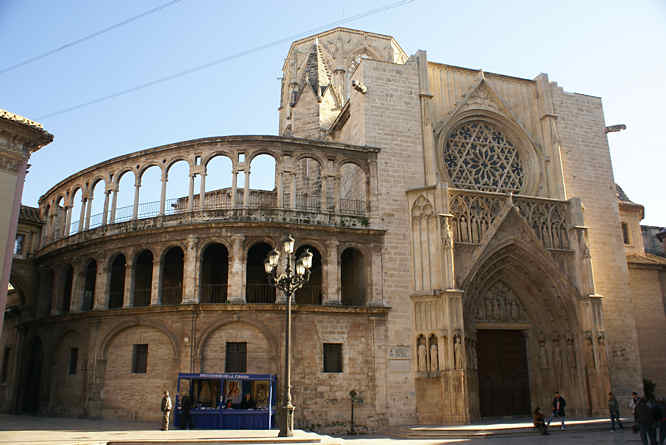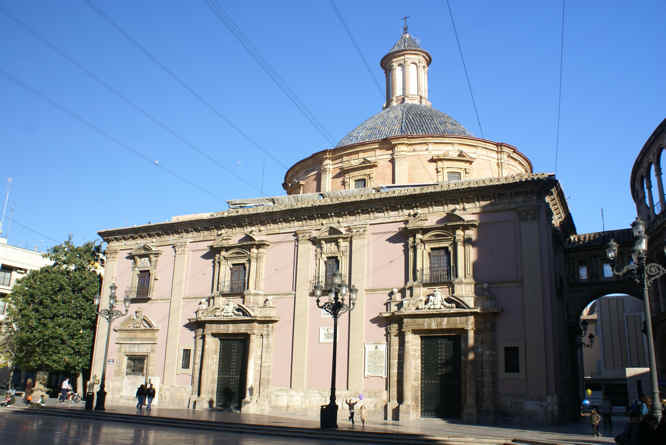Plaza de la Virgen - The Virgin's Square Valencia
This was the Roman forum in ancient times, (the Roman market and political centre) now there is the cascading fountain of rivers. The figure of the laying man symbolising the river Turia.

There are eight women surrounding him symbolising the eight channels that flow from the river Turia. It is beautiful and calm place to sit, have a drink and people watch whilst listening to the sounds of flowing water. The place has a relaxing atmosphere! Look what you are walking on. The pavement is made from marble. It is very attractive and unusual but it can be slippery when wet.
Valencia's Cathedral
Another of the highlights of Valencia is its Cathedral. Some centuries ago, It used to be a mosque, but when El Cid conquered the city, it became a Roman Catholic cathedral. Later the city was re-conquered by the Muslims as part of the Arab Moorish invasion of Spain and the South of France. The cathedral again became a mosque.
Later, when the Christian King Jaume I, re-conquered Valencia it reverted to a Christian cathedral. The Miguelete bell tower (El Miguelete) is a hexagonal Gothic tower towering over Plaza de la Reina. The main bell in the tower was blessed back in 1418. To enter the tower, go via the main entrance to the Cathedral and turn left. Pay a small amount (around 1.50 euro) and then climb up the 207 steps to the top.

Real Basilica de Ntra Senora - Plaza de la Virgin
This is the pink rectangular building with the dome roof next to the cathedral on the plaza de la virgin. I am not interested in church architecture but the Royal Basilica of our lady has real wow power. I had to sit down and just taking the richly decorated interior.
Old Valencia
The Medieval and Roman urban grid of streets with winding narrow lanes provide shadow and shelter from the heat of the torrid Valencian Summers. It is easy to get lost in this labyrinth. You will find beautifully renovated palaces, posh stores, charming squares, and restaurants with character, trendy and busy bars, but be prepared, you will also see decrepit, shabby areas and dilapidated places.
People in Valencia speak two languages: Spanish and a dialect of Catalan known as Valencian. You will notice this reflected in the street signs as they are bi-lingual. The most traditional zone for shopping in Valencia is in the southern part of the historic centre, along the streets of Colon, Roger de Lauria, Don Juan de Austria, Poeta Querol, Barcas, Pintor Sorolla, Cirilo Amoros.
Valencia is Spain's 3rd largest city and has an outstanding fiesta and festival scene that rivals the south! The best time of year to come is in mid-March for the Las Fallas festival where they build giant paper mache dolls, light giant bonfires and set off fireworks. It is a little bit like Britain's bonfire night but bigger and lots more fun.
If you are going for a weekend break remember that as this is a catholic country most shops are closed on Sunday. Plan to do you shopping on Saturday. Many of the Museums close on Monday so check the internet to find opening days.
Also remember that many shops and museums close for a long siesta lunch break of at least 2 hours normally between 14.00 -1600. If you are going to look around the many churches make sure you dress appropriately. No exposed shoulders and very short skirts or shorts.
Travel books

